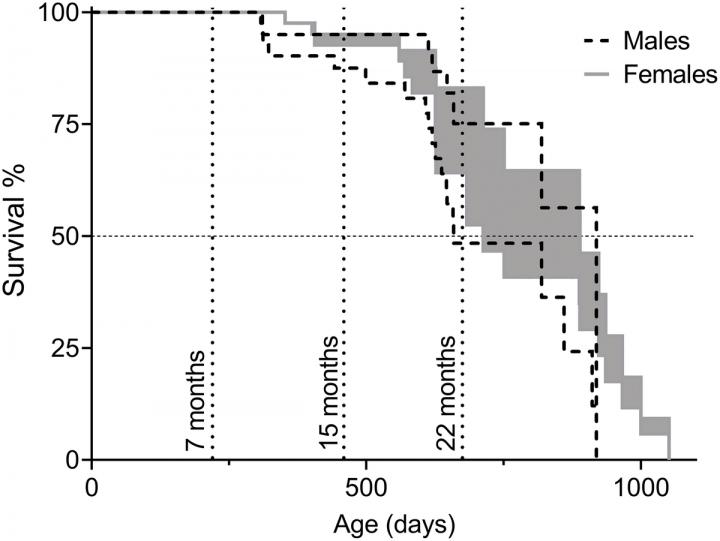Due to strain-specific behavioral idiosyncrasies, inbred mouse strains are suboptimal research models for behavioral aging studies.

Credit: Malin Hernebring
[email protected]
Due to strain-specific behavioral idiosyncrasies, inbred mouse strains are suboptimal research models for behavioral aging studies.
The researchers found that both males and females demonstrated decreased exploratory behavior with age, while memory and depressive-like behavior were maintained.
Dr. Malin Hernebring from the Department of Clinical Neuroscience, Institute of Neuroscience and Physiology, Sahlgrenska Academy at the University of Gothenburg, Gothenburg 41390, Sweden and Discovery Biology, Discovery Sciences, R&D AstraZeneca, Gothenburg, Mölndal 43153, Sweden said, “Mice are the leading mammalian model system for studying genetic effects on cognitive function and are well-suited model organisms for gerontological research with their relatively short lifespan and economic husbandry.”
There is a male sex bias in all biomedical disciplines, although several studies confirm a sex difference in behavioral testing of mice.
Female exclusion has been rationalized by menstrual fluctuations interfering with behavioral data; however, a number of studies have shown that while the estrous cycle increases variability within female cohorts, behavioral differences between the sexes are independent of estrous cycle effects.
General behavior, locomotor activity, and exploratory behavior are easily assessed by open-field testing.
Activity in the open-field and especially exploratory behavior of both male and female C57BL/6J mice has been shown to decline with age and can fundamentally influence other behavioral testing during the aging process.
The forced swim test is one of the most commonly used tests to assess depressive-like behavior by recording the activity of mice placed in water tanks.
In this work, the authors analyzed the behavior of male and female C57BL/6N BALB/c F2 hybrid mice as they age, by following the lifespan of littermates and subjecting cohorts of mature adult, middle-aged, and old mice to behavioral phenotyping.
To the research team’s knowledge, this is the first behavioral study to consider both sex and aging in mice with a hybrid background.
The Hernebring Research team concluded, “We have also demonstrated that increased fat mass partly explains why females swim less than males in the forced swim test of depressive-like behavior.”
###
Full Text – https:/
Correspondence to: Malin Hernebring email: [email protected]
Keywords: F2 hybrid mice, aging, sex comparison, exploratory activity, water-based behavioral tests
About Aging-US
Launched in 2009, Aging-US publishes papers of general interest and biological significance in all fields of aging research as well as topics beyond traditional gerontology, including, but not limited to, cellular and molecular biology, human age-related diseases, pathology in model organisms, cancer, signal transduction pathways (e.g., p53, sirtuins, and PI-3K/AKT/mTOR among others), and approaches to modulating these signaling pathways.
To learn more about Aging-US, please visit Aging-US.com”>http://www.Aging-US.com or connect with @AgingJrnl
Aging-US is published by Impact Journals, LLC to learn more please visit http://www.
Media Contact
Ryan James Jessup
[email protected]
202-638-9720
Original Source
https:/
Related Journal Article
http://dx.




